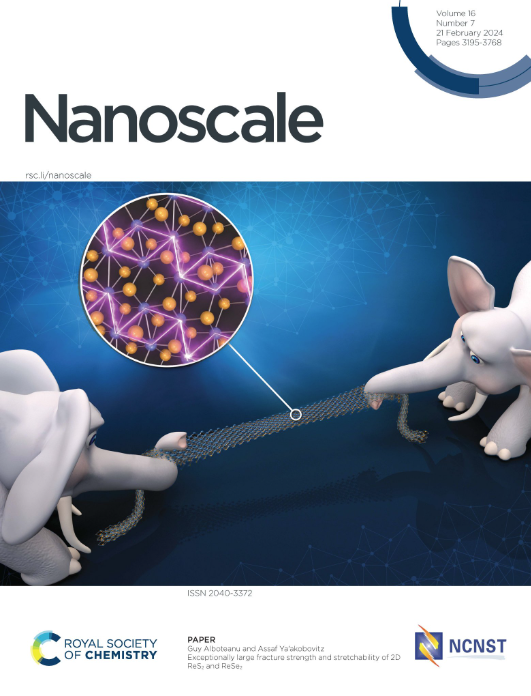An injectable hydrogel with photothermal and chemodynamic therapies for targeted promotion of ferroptosis in oral squamous cell carcinoma
IF 5.8
3区 材料科学
Q1 CHEMISTRY, MULTIDISCIPLINARY
引用次数: 0
Abstract
Ferroptosis-driven tumor ablation strategies based on nanotechnology could be achieved by increasing hydrogen peroxide (H2O2) concentrations or decreasing glutathione (GSH) levels. However, the intracellular antioxidative defense mechanisms endow the oral squamous cell carcinoma (OSCC) cells with ferroptosis resistance capacity. Therefore, injectable self-healing carboxymethyl chitosan (CMCS)/aldehyde-based hyaluronic acid (HA–CHO)/PVP–CuO2 (PCu)/polydopamine (PDA) (CHPP) hydrogels were developed to promote ferroptosis through increasing H2O2 concentrations and decreasing GSH levels. The introduction of HA–CHO can directly target the CD44 receptor and form Schiff bonds via CMCS to build the backbone of CHPP hydrogels. The CHPP hydrogels can responsively release H2O2 to catalyze the production of hydroxyl radical (˙OH) via chemodynamic therapy (CDT) in the tumor microenvironment (TME), sustained depletion of GSH through the dual action of Cu2+ and ˙OH, and generate repeated high temperatures under photothermal therapy (PTT) for a direct OSCC-killing effect after the loading of PCu and PDA. In addition, the OSCC tissue RNA sequencing suggests that the differentially expressed genes of the CHPP hydrogels exerting the targeted OSCC therapy enrich the ferroptosis signaling pathways significantly. Then, liproxstatin-1 (a ferroptosis inhibitor) was utilized to recover the activation of glutathione peroxidase 4 (GPX4), which can weaken the therapeutic effect of CHPP on OSCC. The CHPP hydrogels are a promising strategy for the treatment of OSCC.

通过增加过氧化氢(H2O2)浓度或降低谷胱甘肽(GSH)水平,可以实现基于纳米技术的铁氧化驱动的肿瘤消融策略。然而,细胞内的抗氧化防御机制赋予了口腔鳞状细胞癌(OSCC)细胞抗铁血病的能力。因此,研究人员开发了可注射的自愈合羧甲基壳聚糖(CMCS)/醛基透明质酸(HA-CHO)/PVP-CuO2(PCu)/多巴胺(PDA)(CHPP)水凝胶,通过增加H2O2浓度和降低GSH水平来促进铁变态反应。HA-CHO 的引入可直接靶向 CD44 受体,并通过 CMCS 形成希夫键,从而构建 CHPP 水凝胶的骨架。CHPP 水凝胶可通过化学动力学疗法(CDT)在肿瘤微环境(TME)中释放 H2O2 催化羟自由基(˙OH)的产生,通过 Cu2+ 和 ˙OH 的双重作用持续消耗 GSH,并在光热疗法(PTT)下产生反复高温,在负载 PCu 和 PDA 后直接杀死 OSCC。此外,OSCC组织RNA测序表明,CHPP水凝胶靶向治疗OSCC的差异表达基因显著丰富了铁变态反应信号通路。然后,利用脂氧司他丁-1(一种铁变态反应抑制剂)恢复谷胱甘肽过氧化物酶4(GPX4)的活化,这可能会削弱CHPP对OSCC的治疗效果。CHPP水凝胶是治疗OSCC的一种很有前景的策略。
本文章由计算机程序翻译,如有差异,请以英文原文为准。
求助全文
约1分钟内获得全文
求助全文
来源期刊

Nanoscale
CHEMISTRY, MULTIDISCIPLINARY-NANOSCIENCE & NANOTECHNOLOGY
CiteScore
12.10
自引率
3.00%
发文量
1628
审稿时长
1.6 months
期刊介绍:
Nanoscale is a high-impact international journal, publishing high-quality research across nanoscience and nanotechnology. Nanoscale publishes a full mix of research articles on experimental and theoretical work, including reviews, communications, and full papers.Highly interdisciplinary, this journal appeals to scientists, researchers and professionals interested in nanoscience and nanotechnology, quantum materials and quantum technology, including the areas of physics, chemistry, biology, medicine, materials, energy/environment, information technology, detection science, healthcare and drug discovery, and electronics.
 求助内容:
求助内容: 应助结果提醒方式:
应助结果提醒方式:


